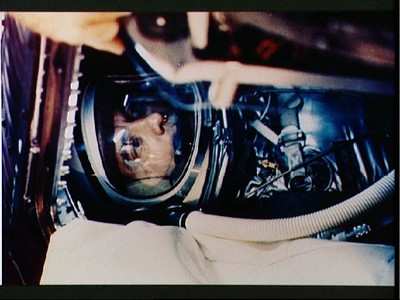Sun, May 08, 2011
Early IBM Analytics Technology Provided Mission Critical Data
In Real-Time
As NASA celebrated the 50th anniversary of the first U.S. manned
spaceflight at an event at the Kennedy Space Center on Thursday,
IBM commemorated its team of mathematicians and technologists who
supported the Project Mercury missions in the 1960s.

"Alan Shepard was the bravest of the brave and his flight
ushered in America's space age," said Professor Arthur Cohen, the
mathematician who led IBM's team that supported Project Mercury.
"The IBM team had the honor of applying computing power and
mathematics to support Project Mercury to provide real-time data to
NASA Mission Control. We experienced an unforgettable sense of
excitement when Alan Shepard safely accomplished his mission. I
will forever remember May 5, 1961 and the incredible team of NASA
and IBM men and women I had the opportunity to work with."
While people around the world were on the edge of their seats on
May 5, 1961, the IBM team was counting on the technology they had
developed to track the spacecraft and provide real-time information
to Mission Control. IBM worked to address the unique data
processing challenges presented by the real-time information
requirements of NASA's Mercury mission.
The team developed a "real-time channel" called the IBM 7281,
which could receive up to 1,000 bits of data per second -- a
breakthrough innovation at the time. They also developed advanced
programs and mathematics to analyze incoming data and provide
"mission critical" information to NASA flight controllers
throughout the space flight for evaluation and necessary action.
Their work represented the early days of real-time and predictive
analytics, which today is a major growth initiative for IBM. Even
then, as it is today, IBM was in the business of making sense of
data.

To provide real-time information to Mission Control, the IBM
team installed and maintained three large-scale computers which
funneled all flight information: two 7090 transistorized computers
located at Goddard Space Flight Center in Greenbelt, Maryland and a
709 computer in Bermuda. The two IBM 7090 computers determined
powered flight trajectory parameters and the present position of
the spacecraft. They predicted future spacecraft position and
transmitted continuous data for display at Mission Control
throughout the flight. The IBM 709 computer calculated normal
orbital flight information in addition to its most important
function -- determining trajectory dynamics during the critical
launch and early orbit phase. The 709 computer analyzed data from
local radar and telemetry sources in real-time.
IBM's work on Project Mercury helped lay the foundation for the
company's work on NASA's Gemini and Apollo space missions and how
businesses and governments exploit data today -- from air traffic
control systems to online travel reservations.
More News
Ground Stop (GS) The GS is a process that requires aircraft that meet a specific criteria to remain on the ground. The criteria may be airport specific, airspace specific, or equip>[...]
Aero Linx: Australian Transport Safety Bureau (ATSB) The Australian Transport Safety Bureau (ATSB) improves safety and public confidence in aviation, marine and rail transport thro>[...]
“The Palo Alto stopover confirmed—yet again—that flight schools and aero-clubs are no longer just curious about electric training; they are ready to buy. In just >[...]
Pilot’s Failure To Maintain Clearance From The Water While Flying At A Low Altitude Analysis: The flight of two airplanes was in cruise flight on a north heading about 50 ft >[...]
Also: 48th Annual Air Race Classic, Hot Air Balloon Fire, FAA v Banning 100LL, Complete Remote Pilot The news Piper PA-18 Super Cub owners have been waiting for has finally arrived>[...]
 ANN's Daily Aero-Term (06.30.25): Ground Stop (GS)
ANN's Daily Aero-Term (06.30.25): Ground Stop (GS) ANN's Daily Aero-Linx (06.30.25)
ANN's Daily Aero-Linx (06.30.25) Aero-News: Quote of the Day (06.30.25)
Aero-News: Quote of the Day (06.30.25) NTSB Final Report: ICON A5
NTSB Final Report: ICON A5 Airborne Affordable Flyers 06.26.25: PA18 Upgrades, Delta Force, Rhinebeck
Airborne Affordable Flyers 06.26.25: PA18 Upgrades, Delta Force, Rhinebeck




